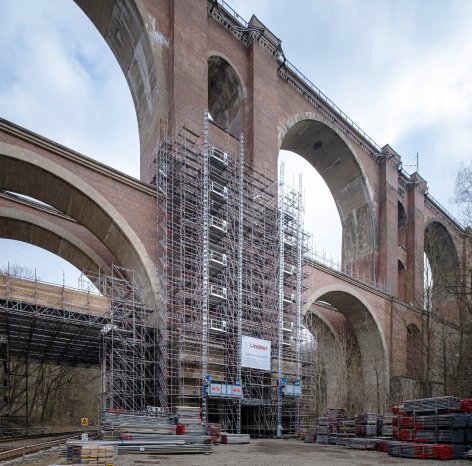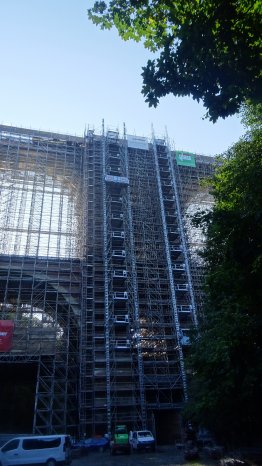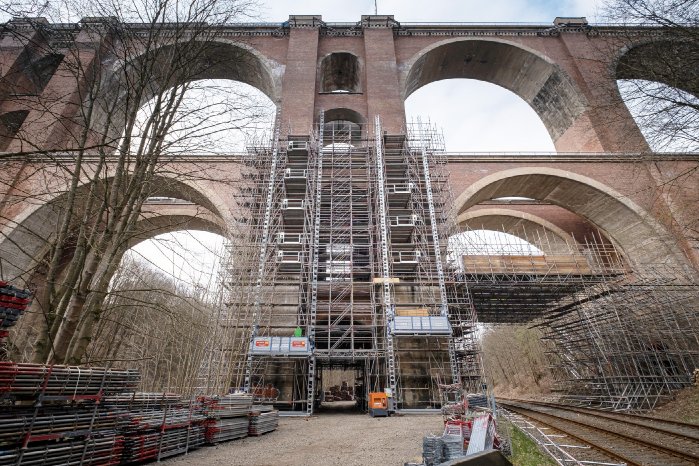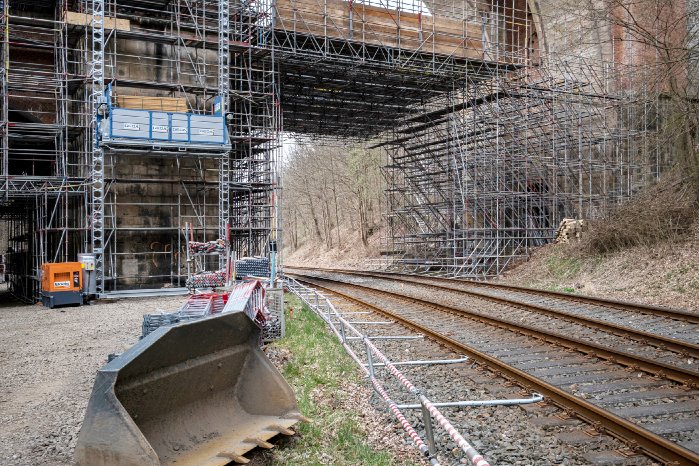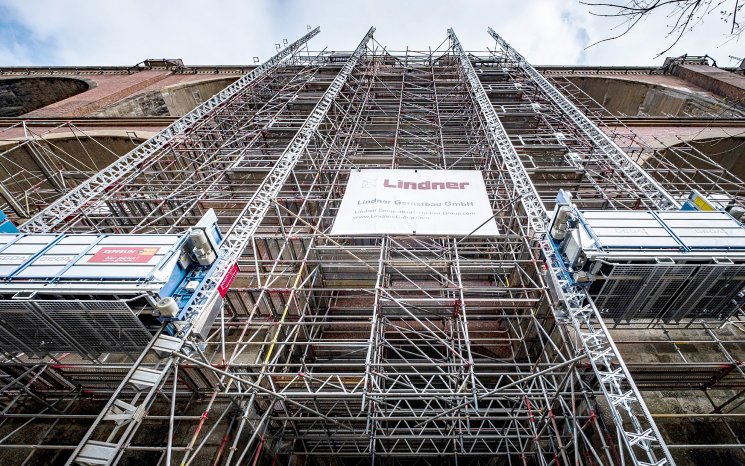The Elster Viaduct spans across the White Elster river and the Gera South–Weischlitz railway line that runs parallel to the river. With a spectacular height of 68 m and length of 270 m, the railway bridge is the world’s second largest brick bridge after the Göltzsch Viaduct. The foundation stone was laid back in 1846 and up to 800 workers used 12 million bricks to build the viaduct over a period of five years. Various renovations and repairs followed, and even a partial reconstruction after the central viaduct pillar was blown up in World War II.
To secure the stability of the monument for today’s railway traffic, the brickwork will be extensively renovated from this year onwards and the track base will be rebuilt. German national railway operator Deutsche Bahn reports that there is currently water ingress into the structure because the sealing and drains are in need of repair. All work has to take into account the listed status of this historically significant structure. While one of the tracks will be accessible for most of the work period, there will be instances where the section will have to be closed fully.
The construction work presents a challenge, not only because of the sheer size. The location of the bridge in several biotopes, nature reserves and conservation areas also plays an important role. An approximately 30 m long suspended bridge was installed between the supports of the Elster Viaduct for transporting materials across the White Elster. There is very little space available on site, which makes horizontal transport and erecting scaffolding difficult.
Vertical transport sorted
Fortunately, the difficulties with horizontal transport are easily offset by the extremely easy vertical transport. Four GEDA transport platforms type GEDA 1500 Z/ZP will be used during the entire five-year construction period. In the first step, these construction hoists will primarily be transporting materials for setting up the scaffolding. The responsible company Lindner Gerüstbau GmbH from Kolkwitz was hired to implement this giant project. The GEDA transport platforms are hired from LEX, part of the Lindner Group, who rely on the longstanding experience and know-how of GEDA GmbH. The medium-sized industrial and construction hoist manufacturer from Bavaria has over 90 years of experience and is happy to support this type of project. GEDA equipment is particularly interesting for plant hire companies because the unique quality “made in Germany” speaks for itself. The high level of quality, delivery reliability and customer-focused service are priorities and simply a matter of course for GEDA.
GEDA prestige products manage the giant task
Once the scaffolding has been erected, the GEDA transport platforms can really show what they can do. The product series, which has proven successful for 25 years, has two separate controls and can be used either as a material hoist only or as a transport platform for passengers and materials. This feature will be particularly interesting during the actual renovation work. Everyone involved will be transported to their destination quickly and safety, as well as all materials required for the different work sections. When the transport platform control is activated, passengers can be transported with a lifting speed of 12 m/min. If only materials are transported, the GEDA 1500 Z/ZP automatically switches to material hoist mode with a higher speed of 24 m/min. The GEDA 1500 Z/ZP has a maximum lifting height of 100 m, which is not fully used on the world’s second largest brick bridge. The established two-mast system of the GEDA 1500 Z/ZP is used at this construction site. It guarantees that the platform remains stable during travel and also produces low anchoring forces: Despite the high load capacity of 2,000 kg or seven passengers, the load distribution across two masts means that only low forces impact the historic outer walls. The proven GEDA UNI-X-MAST system is used for this project.
A construction project with high requirements
Even bulky construction materials can be transported with ease thanks to the spacious “I” platform. It is used on three hoists and, with its dimensions of 4.35 m x 1.65 m, it can transport an astounding amount of large and heavy materials in a single run. In order to meet the requirements of any construction site and transport material, customers can choose from a total of 14 different platform options for the GEDA 1500 Z/ZP. The convenient modular design permits a variety of different combinations and ensures that platforms can be exchanged easily. The transport platform can be perfectly adapted to the conditions on site with clever accessories. This is a very valuable aspect considering the lack of available space and the unusual circumstances in Plauen. To ensure safe exit at the landing levels, 16 “Comfort” landing level safety gates were installed for each hoist. It was a reassuring to see that GEDA reviewed the aspect of safe transfer from hoist to landing platform once again. This resulted in the development of not just one, but two new landing level safety gates.
Lindner Group
The Lindner Group is Europe’s leading specialist in the fields of interior fit-out, façades and insulation. The family-run company has more than 50 years of experience in “building with new solutions” – developing and implementing individual, progressive project solutions that offer added value. With around 7,500 employees, Lindner from Arnstorf in Bavaria has production facilities and subsidiaries in more than 20 countries.
